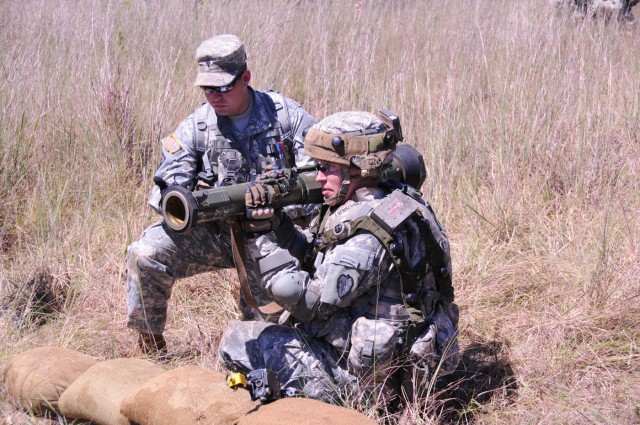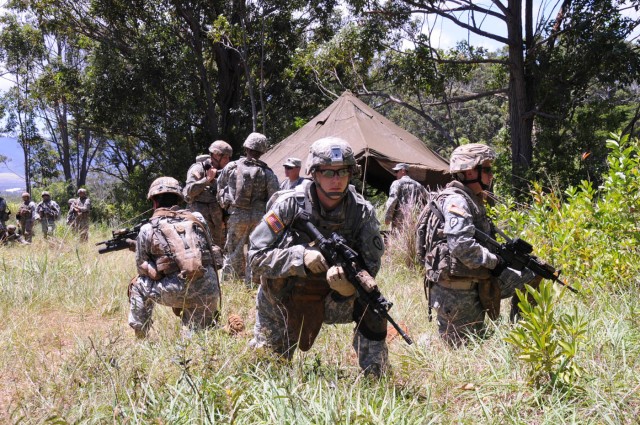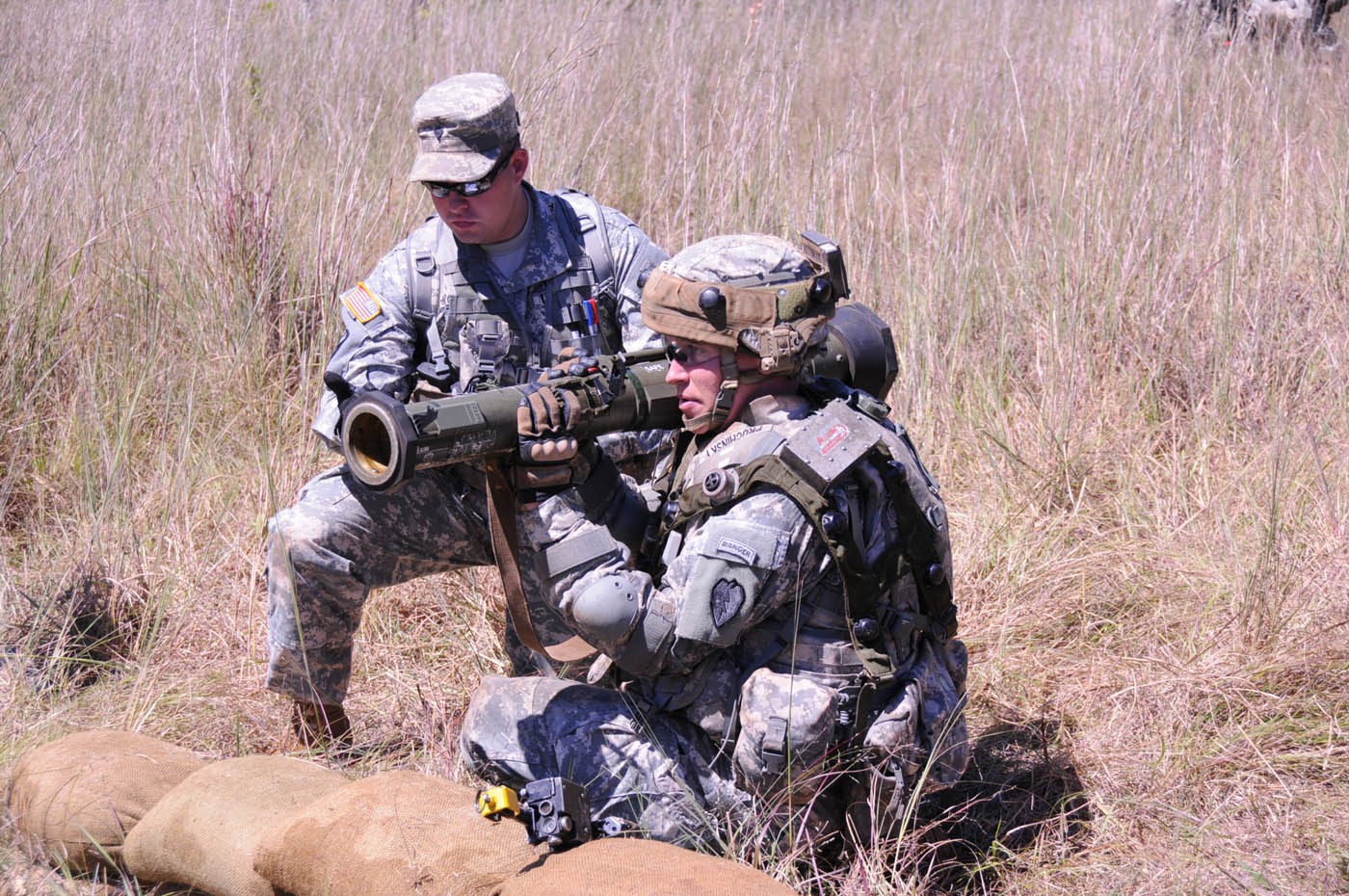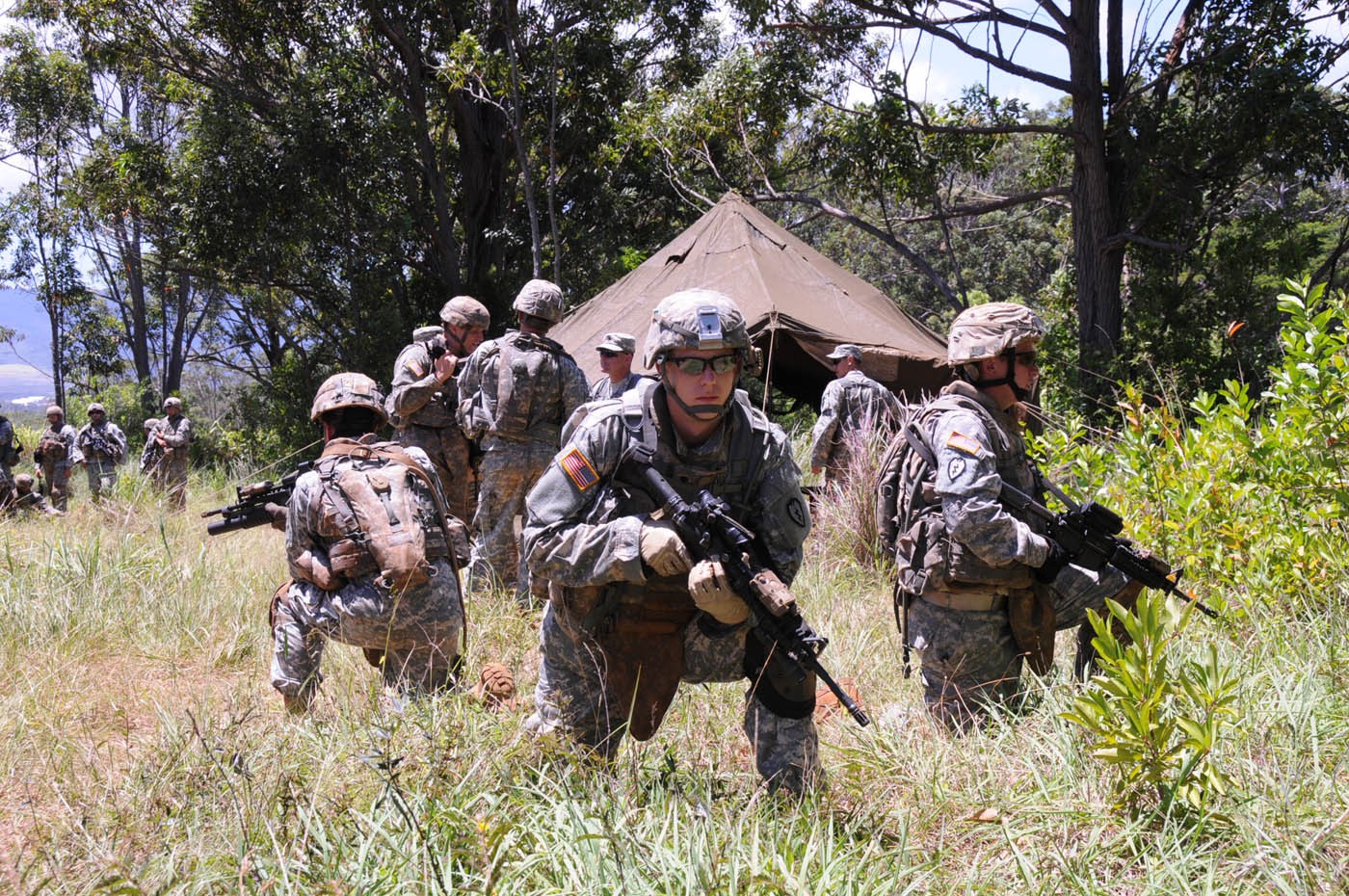SCHOFIELD BARRACKS, Hawaii (Sept. 12, 2009) - As the Army evolves, so does its Infantry Corps. The Soldiers from the 2nd Stryker Brigade Combat Team, 25th Infantry Division, conducted their Expert Infantry Badge testing Sept 9 through 11 at East Range here, leading the way as the first Army unit to execute the new test.
"It\'s more combat oriented than your standard EIB," said Sgt. Maj. Steven Hatton, operations sergeant major, 2nd SBCT, 25th ID. "This way, the Soldiers are put into actual combat scenarios where they leave a patrol base to an objective and complete tasks along the way."
The new concept, called EIB 21, sends Soldiers down three individual "lanes:" the patrol, TCP, and urban lanes. As Soldiers progress through the lanes, they take out enemy positions, determine grid coordinates, and provide first aid on casualties.
"It's going well. We're seeing a high rate of 'NO GOs' but that's to be expected because of the way it's being tested," Hatton said. "The testing is now a five-day event, [and] the only prerequisite now is the weapon qualification."
In the old test, Soldiers had to have the foot march, weapons qualification, day and night land navigation, and the Army Physical Fitness Test performed prior to entering the test.
"Now those tasks are in the test," Hatton said. "On Day One, you do the APFT, and day and night land navigation. If Soldiers fail one of those and not meet the standards, they are out of the running. After that you have three days of lane testing, where you have 10 tasks in each lane. The last day, Soldiers then do a 12-mile foot march within three hours."
Sgt. Arthur Smith, Company A, 1st Battalion, 27th Infantry Regiment, said the test was more challenging than he expected, having attempted the course in 2006.
"It was a lot more fast-paced test than I am used to," Smith said. "You are moving so quickly through these lanes that it takes a second for the knowledge to come out, but I took my time and did alright."
Smith said he considers the new method for the EIB as the next evolution of the test for today's infantryman.
"In the old way, we didn't use things like flash bangs, which this test had," Smith said. "The lanes were similar to what a Soldier would face in combat with 9-line MEDEVACs, UXOs, and overall things an infantryman sees in combat."
Staff Sgt. Johnny Jackson, a platoon sergeant from Company B, 1st Bn., 27th Inf., and grader of the test said that the EIB is not just an award but rather a mark of distinction for the Soldiers competing from 2nd Stryker Brigade.
"Some people refer to the EIB as the mark of the man, and in the infantry world it says that you are an expert in your trade," Jackson explained. "The EIB is a symbol of what we do [and are] and separates those who are average from those who take this serious and are the experts in their field."
"The EIB is something that is hard to obtain," Hatton said. "It's something that every infantryman should strive to get, and it's not going to get any easier. It's only going to become tougher."
Hatton said for any Soldier to be successful, he must be focused and fit.
"The biggest thing is attention to detail," he said. "You need to focus on your task because when you do the task out of sequence or the wrong way, that's what gets you a 'NO GO.' Pay attention and be physically fit because you only have one chance this time."
Before the competition even ended, Hatton had one last thing to say for everyone participating in the test.
"The Soldiers have a lot on their plate," he said. "We're going into the ramp up for our next deployment, and these Soldiers are out here giving it their all, every day and even on the weekends. Even though some of them are not meeting the standards, they continue to come out here and get the training, which is what this is all about - good individual training for Soldiers."
The test wrapped up Sept. 12. More than 450 Soldiers from 2nd SBCT competed and 106 walked away with expert infantry badges pinned to their chest.






Social Sharing